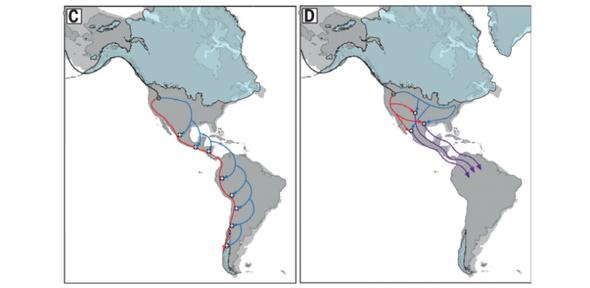First Peoples: two ancient ancestries 'reconverged' with settling of South America
First Peoples: two ancient ancestries ‘reconverged’ with settling of South America
Published
31 May 2018

Two of the four possible combinations of ancient admixture highlighted by the researchers.
Credit: Scheib/Kivisild/Mahli
New research using ancient DNA finds that a population split after people first arrived in North America was maintained for millennia before mixing again before or during the expansion of humans into the southern continent.
Recent research has suggested that the first people to enter the Americas split into two ancestral branches, the northern and southern, and that the “southern branch” gave rise to all populations in Central and South America.
Now, a study shows for the first time that, deep in their genetic history, the majority – if not all – of the Indigenous peoples of the southern continent retain at least some DNA from the “northern branch”: the direct ancestors of many Native communities living today in the Canadian east.
The latest findings, published today in the journal Science, reveal that, while these two populations may have remained separate for millennia – long enough for distinct genetic ancestries to emerge – they came back together before or during the expansion of people into South America.
More:
http://www.cam.ac.uk/research/news/first-peoples-two-ancient-ancestries-reconverged-with-settling-of-south-america
